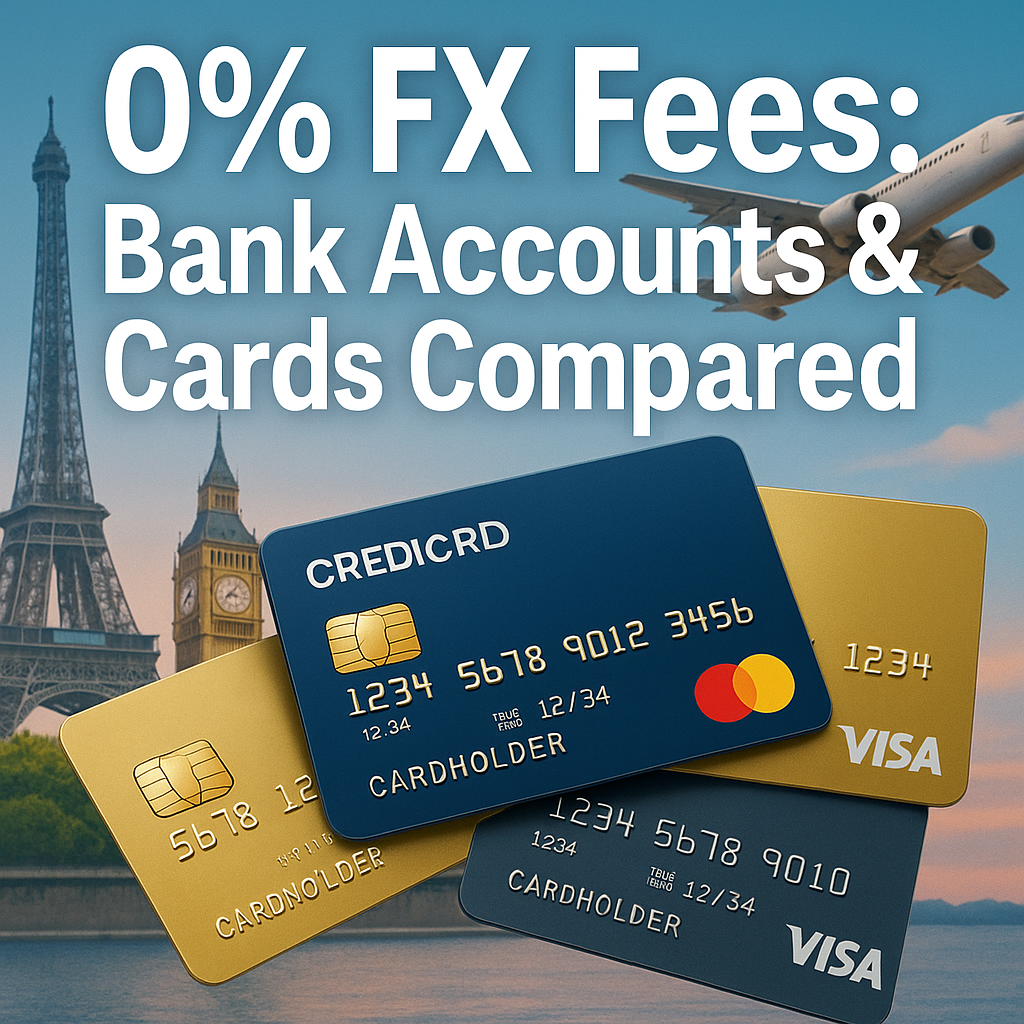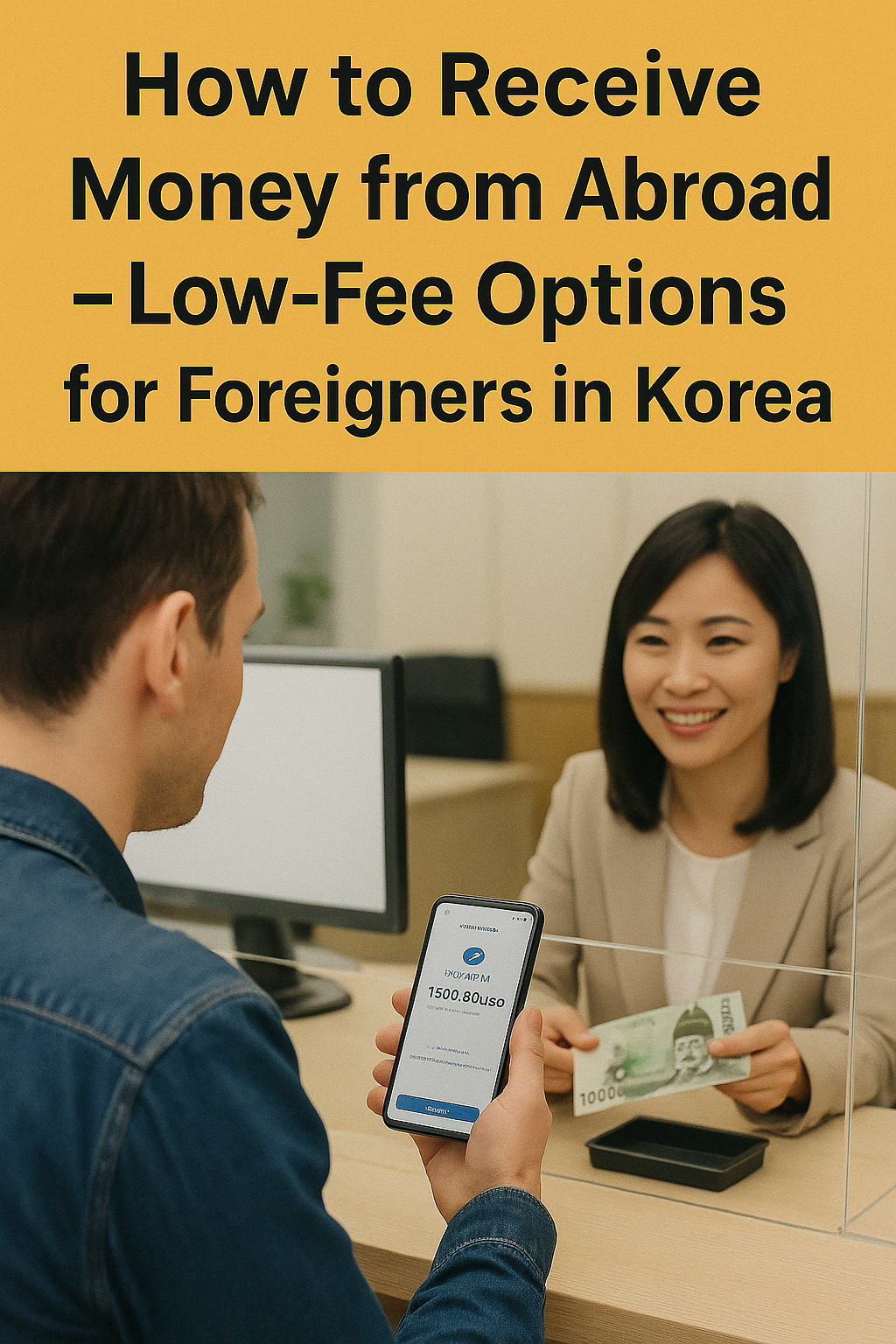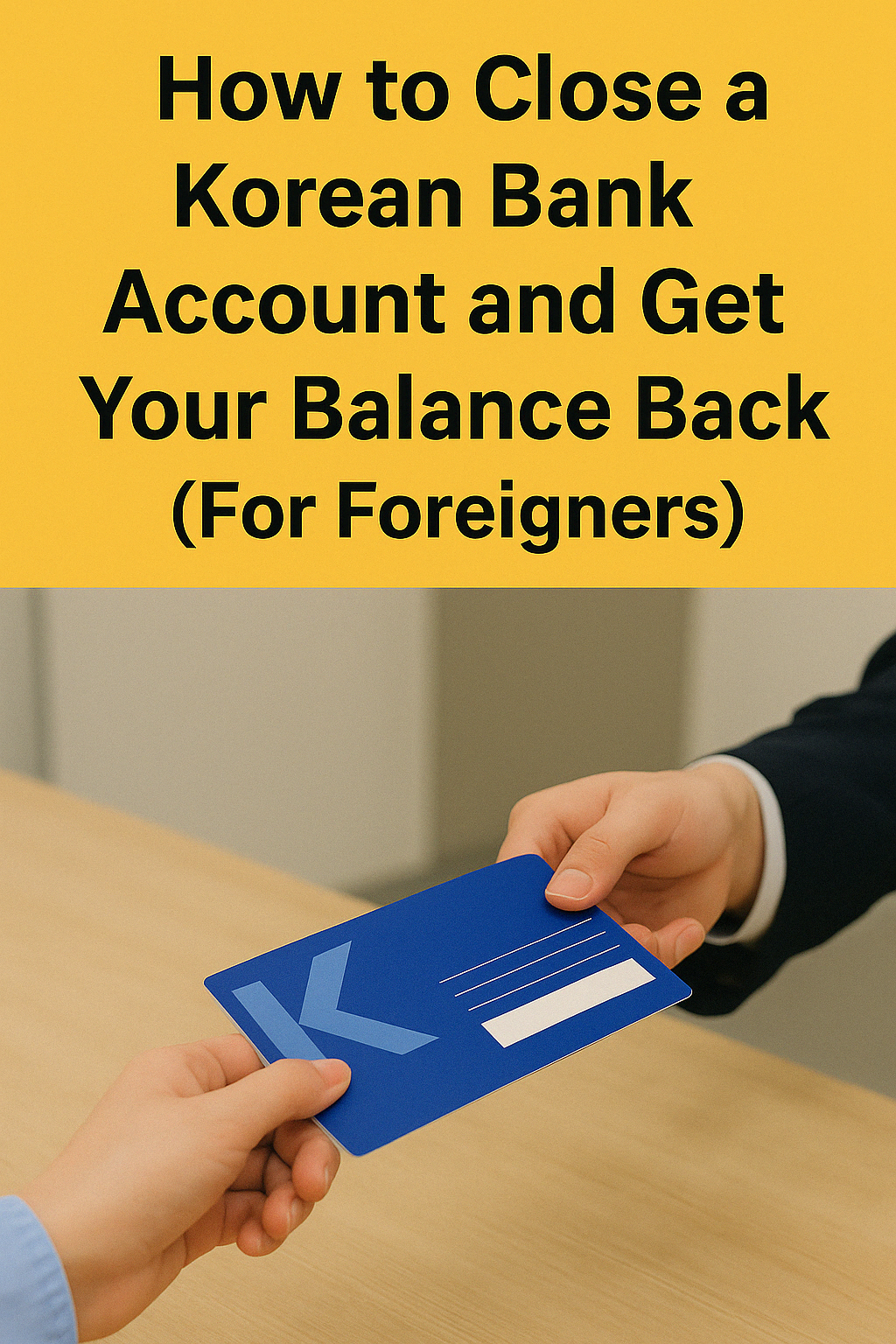Discover Korea’s most practical money-saving habits and smart spending techniques – from pharmacy hacks to budgeting rules and affordable wellness. Learn how digital nomads and expats are saving big with Korean financial wisdom.
Smart Money
How Koreans Save Money Differently – And Why It Works Globally
What the World Can Learn from Korea’s Quiet Financial Discipline
Why Korea’s Money Habits Deserve Attention
In a world where debt is rising and savings are shrinking, Korea offers a quiet yet powerful model of financial discipline.
Unlike many countries where credit cards and “buy now, pay later” dominate, many Koreans still follow traditional values of saving first, spending later.
So, what can you learn from this?
A lot more than you think.
This post breaks down real habits that Koreans use—things that anyone, anywhere in the world can start doing today—even if you’re not good with money or already in debt.
1. The 50-30-20 Rule? Koreans Prefer 70-20-10
In the West, people often follow the 50-30-20 budgeting rule:
- 50% for needs (rent, food)
- 30% for wants
- 20% for savings
But many Koreans follow something closer to 70-20-10:
- 70% for needs
- 20% for savings
- 10% (or less) for wants
It’s a mindset that says:
“Enjoy life, but not at the expense of your future.”
This frugal approach isn’t about suffering—it’s about prioritizing stability.
2. Cash Envelopes Still Rule
Believe it or not, some Korean households still use envelopes to divide monthly expenses:
- Rent envelope
- Grocery envelope
- Emergency fund envelope
It’s simple, but powerful.
This method helps avoid overspending—because once the envelope is empty, you stop.
It’s old-school, but it works.
Even digital-savvy Koreans often mirror this idea with separate bank accounts or e-wallets.
3. Emergency Fund = Absolute Must
In Korea, it’s common wisdom to have at least 6 months’ worth of living expenses saved.
Why? Because jobs can be unstable, medical costs can be high, and family obligations are strong.
Instead of waiting for disaster, they prepare in advance.
Global lesson?
Build your freedom fund—because peace of mind is worth more than any vacation.
4. Zero-Based Budgeting Is Not Just for Nerds
In Korean households, every won (₩) often has a job.
This is zero-based budgeting in action:
Income – Expenses = Zero
Every dollar is assigned:
- Rent
- Food
- Transport
- Savings
- Education
- Insurance
It’s not about restriction—it’s about intention.
This mindset prevents “money leaks” from coffee runs or random shopping.
When your money has a plan, you stay in control.
5. Koreans Save to Invest, Not Just to Save
Korean saving isn’t just about hoarding money.
It’s often about preparing to invest—in:
- Real estate
- Retirement plans
- Stock ETFs
- Education for kids
- Or even a side business
This makes savings productive, not passive.
If you just save but don’t grow your money, you’re falling behind.
Start small. Open an investment account.
Even $10/month is better than nothing.
6. The Power of Micro Goals: Saving for One Thing at a Time
Instead of vague savings like “just save more,” Koreans often save with a goal:
- Trip to Jeju? Save ₩100,000 per month.
- Wedding? Save ₩1 million per month.
- First car? Save ₩500,000 per month.
Micro-goals feel doable and make it easier to stay motivated.
And once you achieve one goal, you move on to the next.
7. Money Talk Is Not Taboo
In Korea, it’s not unusual for families to talk openly about money:
- Parents guide their kids early
- Friends share tips on investment apps
- Coworkers even discuss saving challenges
This openness builds community learning, not shame.
The more we talk about money, the better we get at managing it.
Try this:
Start a small savings challenge with a friend or sibling. It works better together.
Conclusion: Korea’s Quiet Money System Is Loud with Wisdom
You don’t need to move to Seoul to apply these lessons.
You just need the mindset behind them:
- Save first, not last
- Budget with intention
- Make every dollar count
- Don’t fear frugality—own it
- Talk about money. Learn together
Whether you live in New York, Nairobi, or Naples—these habits work globally.
They’re simple, they’re sustainable, and most importantly—they’re real.
Coming Up Next:
📌 Top 5 Korean Pharmacies & What You Can Buy Without a Prescription (As a Foreigner)
→ We’ll show you where to go, what’s safe to buy, and the most popular Korean health products people fly in for.
2025 Smart Side Hustles & Blogging Income Master Series
Start from $0 and build long-term digital income step by step — from side hustles to blogs, evergreen content, and smart email strategies. This 7-part series guides you from zero to a scalable online income system.
2025 Smart Side Hustles & Blogging Income Master Series
Start from $0 and build long-term digital income step by step — from side hustles to blogs, evergreen content, and smart email strategies. This 7-part series guides you from zero to a scalable online income system.
-
 Top 5 Side Hustles You Can Start with $0 in 2025
Top 5 Side Hustles You Can Start with $0 in 2025
Discover five realistic, zero-cost side hustles anyone can start today — perfect for long-term income. -
 How to Make Money While You Sleep
How to Make Money While You Sleep
Build income streams that earn even while you’re offline, using automated and evergreen methods. -
 Start a Blog That Earns $1,000/Month – Even in 2027
Start a Blog That Earns $1,000/Month – Even in 2027
Learn how to create a simple blog that turns into a monthly income machine using evergreen strategies. -
 Evergreen Blog Topics That Can Make Money for Years
Evergreen Blog Topics That Can Make Money for Years
Explore high-performing blog topic categories that stay profitable long after publishing. -
 The Smart Blogger’s Guide to Monetizing Evergreen Posts
The Smart Blogger’s Guide to Monetizing Evergreen Posts
A proven system for turning evergreen blog posts into ongoing income through smart monetization tactics. -
 How to Build an Email List from Evergreen Blog Content
How to Build an Email List from Evergreen Blog Content
Grow a powerful email list from blog posts — even with minimal traffic — using free tools and high-converting opt-ins. -
 What to Send to Your Email List (Without Being Salesy)
What to Send to Your Email List (Without Being Salesy)
Send emails that build trust and drive revenue without sounding pushy or sales-focused.
The Ultimate Guide to 0% FX Fees: Bank Accounts & Cards Compared
Empower globe-trotters and international professionals to avoid hidden currency conversion fees and keep every dollar they earn.
Introduction
Every time you pay in a foreign currency or transfer money abroad, banks quietly deduct 1–3% in FX fees. Over a year, those costs add up to hundreds or thousands of dollars. This guide reveals the top 5 zero-fee currency accounts and cards so you can spend, send, and withdraw cash anywhere without hidden charges.
1. Wise Multi-Currency Account
- Why it’s great: True mid-market exchange rate, 0% markup on conversions up to $1,000/month.
- Key features:
- Hold & convert in 50+ currencies
- Free local bank details (USD, EUR, GBP) for fee-free receipts
- Debit card with 0% FX fee worldwide
- Action Steps:
- Sign up at Wise.com in 2 minutes.
- Verify your identity with a photo ID.
- Order the debit card (arrives in 5–7 business days).
- First Month Target: Convert $800 in multiple currencies → save $16–$24 in fees.
2. Revolut Premium Plan
- Why it’s great: Unlimited currency exchanges at interbank rate (up to $3,000/month)
- Key features:
- Real-time rate notifications
- Overseas ATM withdrawals fee-free up to $400/month
- Global travel insurance add-on
- Action Steps:
- Upgrade to Premium for $9.99/month.
- Link your primary bank account for top-ups.
- Enable “Auto-exchange” to convert at best times.
- First Month Target: Exchange $2,500 → save $50–$75 compared to typical bank fees.
3. N26 You Account
- Why it’s great: €5/month for unlimited free withdrawals and FX fee-free payments
- Key features:
- European IBAN for SEPA transfers
- Fee-free card payments everywhere
- Built-in budgeting and Spaces sub-accounts
- Action Steps:
- Download the N26 app and register with your EU address (or use your home country where supported).
- Order the N26 You Mastercard.
- Set up Spaces for “Travel Fund” to auto-save.
- First Month Target: Spend €1,000 abroad → save €10–€30 in FX fees.
4. Charles Schwab High-Yield Checking (U.S.)
- Why it’s great: Unlimited ATM fee rebates worldwide + no ATM or FX fees
- Key features:
- No foreign transaction fees ever
- ATM reimbursements for any fees charged by other banks
- No monthly maintenance minimum
- Action Steps:
- Open account online with U.S. address.
- Deposit $100 initial balance.
- Download and activate the debit card.
- First Month Target: Withdraw $500 abroad → get full fee rebates.
5. Monzo (UK) Premium
- Why it’s great: Fee-free spending and withdrawals in 90+ currencies up to £2,000/month
- Key features:
- Real-time spending notifications
- Overseas medical insurance included
- “Bill splitting” and Pots for budgeting
- Action Steps:
- Register Monzo in the UK with proof of address.
- Upgrade to Premium for £12.50/month.
- Link your salary or income for fee-free direct deposits.
- First Month Target: Spend £1,200 abroad → save £24–£36.
Conclusion & Next Steps
By signing up for one of these zero-fee FX accounts today, you’ll instantly stop overpaying on every transaction.
- Decide which fits your travel style (frequent ATM use vs. card spending).
- Complete sign-up with their referral link (earn a bonus!).
- Track your first month’s savings in a simple spreadsheet.
CTA:
- Wise: Get started with no FX fees
- Revolut: Unlock Premium benefits
- Schwab: Open free checking
Smart Money & Cost-saving Series – Part 4
How to Receive Money from Abroad – Low-Fee Options for Foreigners in Korea
1. Why Receiving Money Internationally Isn’t Always Easy
Foreigners living in Korea often need to receive money from abroad—for tuition, salary, or support from family.
But international transfers are often:
- Expensive (unexpected bank charges)
- Slow (3–5 business days)
- Confusing (SWIFT codes, intermediary banks, etc.)
Knowing your options helps save money, time, and unnecessary frustration.
2. What You Need to Receive Money in Korea
Prepare the following:
- Your Korean bank’s SWIFT/BIC code
- Your account number and name as registered
- Bank name and branch info in English
- Alien Registration Card (ARC), if verification is required
- Purpose of remittance (some banks ask)
3. Best Methods to Receive Money from Abroad (2025)
Option 1: Direct Bank-to-Bank Transfer (SWIFT)
- Available at major banks (KB, Shinhan, Woori, Hana)
- Takes 2–5 days
- Fees: ₩10,000–₩30,000
- Secure but costly and slower due to intermediary banks
Option 2: Wise (TransferWise)
- Low fees, real exchange rate
- Arrives in 1–2 days
- Both sender and receiver need Wise account
- Ideal for regular transfers or salary payments
Option 3: Western Union / MoneyGram
- Pick up funds at post offices or partner banks
- Near-instant delivery
- High fees and poor exchange rates
- Use only for emergencies or one-time needs
4. Common Mistakes That Delay Transfers
- Wrong SWIFT code or bank account number
- Nicknames instead of official name
- Missing intermediary bank info (especially for USD)
Double-check all details before sending or requesting a transfer.
5. Goldnuri’s Advice
- Use Wise for fast, affordable international transfers
- Use SWIFT for official payments like tuition or company remittances
- Avoid Western Union for large amounts—too expensive
Summary
Receiving money in Korea doesn’t have to be expensive or complicated.
In 2025, options like Wise and direct transfers give you more control and lower fees.
Stay informed and make smart choices to keep more of your money.
Smart Money & Cost-saving Series – Part 3
How to Close a Korean Bank Account and Get Your Balance Back (For Foreigners)
Introduction
Closing your Korean bank account is a crucial step when leaving the country — yet many foreigners either forget or don’t know how to do it properly. This guide walks you through every essential step to ensure your account is safely closed and your money is returned without issues.
Step-by-step: How to Close a Korean Bank Account
Documents You’ll Need
- Passport
- Alien Registration Card (ARC)
- Bankbook (if issued)
- Debit card / Mobile banking app
Where to Go
- Preferably the original branch
- Full-service branches like KB, Shinhan, Woori, Hana are usually fine
How to Request Account Closure
Say or show:
“계좌 해지하고 싶어요 (Gyejwa haeji hago sipeoyo)”
= I’d like to close my bank account.
Refund Options
- Cash withdrawal
- Transfer to another Korean bank
- Wire transfer overseas (with fees)
Hidden Traps to Avoid
1. Automatic Withdrawals
Cancel rent, phone, insurance, utility bill links before closing.
2. Dormant Account Issues
Unused accounts don’t close automatically. Reactivation later is time-consuming.
3. Foreign Currency or Fee Deductions
Check for USD/EUR balances. Some banks deduct fees from inactive accounts.
FAQ
Can I close it after leaving Korea?
Usually no. In-person visit required unless using legal representative with POA.
Return card or bankbook?
Often requested. Bring everything related to the account.
How long does it take?
About 10–20 minutes if no pending payments.
Pro Tips
- Visit 5–7 days before departure
- Request a final balance statement
- Cancel all linked services
- Use remaining cash at airport
- Update platforms like Wise, PayPal if account was linked
Final Thoughts
Closing your account isn’t just a formality — it’s a financial safeguard.
Wrap up properly, and leave Korea knowing your money is secure.







 Top 5 Side Hustles You Can Start with $0 in 2025
Top 5 Side Hustles You Can Start with $0 in 2025 How to Make Money While You Sleep
How to Make Money While You Sleep Start a Blog That Earns $1,000/Month – Even in 2027
Start a Blog That Earns $1,000/Month – Even in 2027 Evergreen Blog Topics That Can Make Money for Years
Evergreen Blog Topics That Can Make Money for Years The Smart Blogger’s Guide to Monetizing Evergreen Posts
The Smart Blogger’s Guide to Monetizing Evergreen Posts How to Build an Email List from Evergreen Blog Content
How to Build an Email List from Evergreen Blog Content What to Send to Your Email List (Without Being Salesy)
What to Send to Your Email List (Without Being Salesy)

